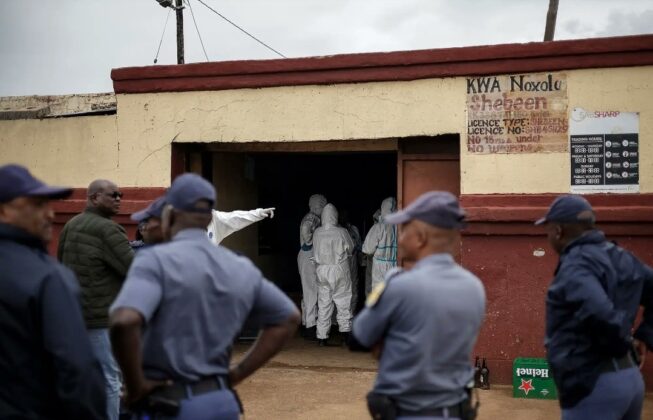![Ocean acidification is worse than we ever anticipated [Marek Okon/Oceanographic]](https://www.thepostnews.net/wp-content/uploads/2025/06/Marek-okon-1920x1080-1.jpg)
Ocean acidification is worse than we ever anticipated [Marek Okon/Oceanographic]
(The Post News)- A new study released by the UK’s Plymouth Marine Laboratory (PML) has confirmed that ocean acidification has now surpassed safe ecological limits, threatening the health of marine ecosystems across the globe.
Often called climate change’s “evil twin,” ocean acidification is a chemical process whereby seawater chemistry is progressively altered through absorption of excess atmospheric carbon dioxide (CO₂) produced by human activities such as fossil fuel burning. When CO₂ dissolves in seawater, it forms carbonic acid, which lowers the pH of the ocean and reduces the availability of carbonate ions—essential for shell-building marine organisms like corals, mussels, and plankton.
Planetary Boundary Breached
The peer-reviewed study, published in Global Change Biology, analyzed 150 years of physical, chemical, and biological data to assess the impact. It found that by 2020, calcium carbonate concentrations in seawater had dropped more than 20% below preindustrial levels in certain regions.
This significant decline crosses what scientists call a “planetary boundary” for ocean acidification—a critical threshold that, once passed, increases the likelihood of destabilising Earth’s natural systems. This makes ocean acidification is now one of the seven planetary boundaries humanity has already breached,
Severe Impacts Already Evident
The effects of ocean acidification are already visible in marine ecosystems:
- Coral reef habitats have declined by 43%, threatening the biodiversity they support.
- Polar pteropods, tiny sea snails crucial to cold-water food webs, have lost 61% of their suitable habitat.
- Coastal bivalves, such as oysters and mussels, have seen a 13% reduction in viable habitats, directly affecting fisheries and aquaculture industries.
These shifts not only threaten marine biodiversity but also impact the food security, cultural traditions, and economies of millions who depend on healthy oceans.
A Path Forward
The authors make it clear that the danger of ocean acidification is both urgent and far-reaching. PML’s Prof Steve Widdicombe, who is also co-chair of the Global Ocean Acidification Observing Network, goes as far as to say, “it’s a ticking time bomb for marine ecosystems and coastal economies.” The question that lies ahead is, what can we do to mitigate this growing threat?
Numerous studies stress that the most critical action is to drastically cut global carbon dioxide emissions by transitioning to renewable energy sources and enforcing stronger climate policies.
Efforts must also include prioritising the restoration and protection of marine ecosystems—especially coral reefs and seagrass beds—which act as natural defenses against the worsening impacts of acidification. Additionally, there are existing global monitoring networks like the Global Ocean Acidification Observing Network (GOA-ON) that play a vital role in tracking acidification trends and providing the data needed for informed decision-making. Monitoring networks like GOA-ON play a vital role in tracking ocean chemistry changes and informing global policy responses. However, these networks require greater international cooperation, expanded coverage, and improved funding, particularly in under-monitored regions.
Though the task is daunting, collective global action is our only viable path forward. As Jessie Turner, director of the International Alliance to Combat Ocean Acidification, aptly puts it: “This report makes it clear: we are running out of time, and what we do—or fail to do—now is already determining our future.”



